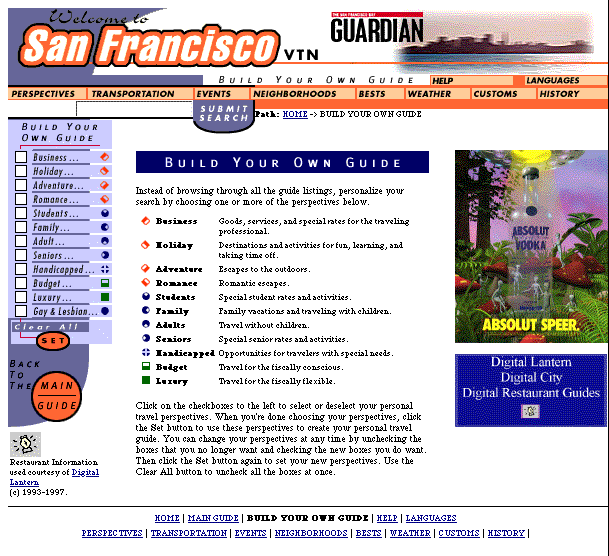vivid created several prototypes and finished tools for this travel network. The tools allowed affiliates to establish their own travel destination sites and included administrative tools, merchant interfaces, and customer views and controls of the information. These tools not only included the front-end interfaces and designs but the back-end technology to implement and control the system.
The proof of concept is a next-generation tool that builds on the network toolkit’s personalized information filtering interface and multilingual support. This proof of concept introduced flexible and extensible information that encompassed time data (like various types of events), place data (including maps, directions, and other location data), perspectives (including reviews, editorial columns, and guides), and categorical data (including filters, searching, and topic navigation) in a clear, unified cognitive model. In addition, the proof of concept introduced several revolutionary advertising models that supported content and interaction-relevant advertising such as product placement.
The proof of concept explored the use of sophisticated interface conventions on the Internet that allowed customers to drag and drop icons representing events, places, reservations, etc., create and maintain interactive itineraries that covered many trips and destinations, store and keep important objects and information for use across the network or at different times, and save preferences for access anywhere in the world.
1996
Participants:
Nathan Shedroff: Information and Interaction Design
Gayle Curtis: Information and Interaction Design
Christian Mogensen: Engineering

Recent Comments